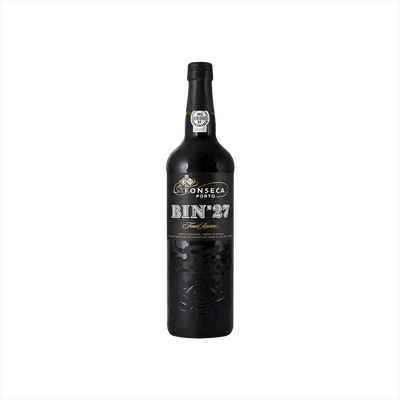Port Wine
What is Port Wine?
Port wine is a fortified Other Specialty wine that originates from the Douro Valley in northern Portugal, where grape brandy is added during fermentation to halt the process and preserve natural sugars. This fortification technique creates Port's signature sweet profile and higher alcohol content, typically ranging from 19-22% ABV. What truly defines Port wine is its protected designation of origin - authentic Port can only be produced in the demarcated Douro region using traditional Portuguese grape varieties like Touriga Nacional and Tinta Roriz, aged in wooden casks, and shipped from the coastal city of Porto.
Learn More About Port Wine
What makes Port Wine unique?
Port wine stands apart from other fortified wines through its specific production method of adding grape brandy during fermentation, which stops the process while natural sugars remain, creating its signature sweetness and higher alcohol content. Unlike other dessert wines that achieve sweetness through late harvests or noble rot, Port's sweetness comes directly from this interruption technique, combined with aging in wooden casks that develops its complex, rich character. The strict geographical designation from Portugal's Douro Valley, along with traditional grape varieties like Touriga Nacional and Tinta Roriz, gives authentic Port a terroir-driven complexity that mass-produced fortified wines simply cannot match.
How is Port Wine made?
Port wine starts as regular red wine grapes—primarily Touriga Nacional, Tinta Roriz, and others—grown on the steep terraced vineyards of Portugal's Douro Valley. During fermentation, winemakers add grape brandy (aguardente) to halt the process while residual sugars remain, creating that signature sweetness and boosting the alcohol to around 20%. The fortified wine then ages in wooden barrels or large vats, developing its complex flavors and rich amber hues over months to decades depending on the style.
How do you drink Port Wine?
Port wine is traditionally enjoyed neat at room temperature in small portions, served in special port glasses that concentrate the wine's rich aromas and complex flavors. While you'll rarely see it served on the rocks or as shots, port does appear in classic cocktails like the Porto Flip, Broken Down Golf Cart, or mixed with brandy in sophisticated after-dinner drinks. This fortified Portuguese wine shines brightest during cooler months and formal occasions—think holiday gatherings, intimate dinner parties, or quiet evenings by the fireplace when you want something warming and contemplative to close out the night.
How do I choose a good Port Wine?
Start by deciding what you want from your Port experience - Ruby Ports offer bright, fruity flavors perfect for beginners, while aged Tawnies bring nutty complexity that pairs beautifully with desserts. If you're mixing cocktails, stick with reasonably priced Ruby or basic Tawny Ports since their bold flavors hold up well against other ingredients, but save those precious vintage bottles for sipping neat. Look for producers like Sandeman, Graham's, or Dow's for reliable quality, and don't be afraid to ask your wine shop for recommendations based on your budget and intended use.
Nutritional Information
Typical Calorie Range per Ounce: 40-50 calories
Typical Carbohydrate Range per Ounce: 4-6 grams
Typical Sugar Range per Ounce: 3-5 grams
Typically Gluten Free: Yes
Port wine is naturally gluten-free since it's made from grapes, but we always recommend checking the specific product label or contacting the producer directly to confirm gluten-free status, especially if you have celiac disease or severe gluten sensitivity. Some producers may use processes or additives that could introduce gluten contamination.
Scrolled this far? Your reward? Port Wine trivia!
- Port wine was originally created by accident during wartime. In the late 1600s, British merchants added brandy to Portuguese wine barrels to preserve them during long sea voyages back to England. The unintended result? The brandy stopped fermentation midway, leaving residual sugar that created the sweet, fortified wine we know today. What started as practical preservation became one of the world's most beloved dessert wines.
- Vintage Port can live longer than most humans. The finest Vintage Ports can age gracefully for over 100 years, with some bottles from the 1890s still drinking beautifully today. The secret lies in their high alcohol content and natural tannins, which act as preservatives. A bottle from a great vintage year like 1963 or 1977 might outlast three generations of the family that bought it.
- Port producers still crush grapes with human feet in granite tanks called "lagares." Despite modern technology, many premium Port houses continue this ancient tradition because human feet provide the perfect pressure – firm enough to extract color and tannins from grape skins, but gentle enough not to crack the seeds, which would release bitter compounds. Teams of workers link arms and stomp grapes in synchronized patterns, turning winemaking into a folk dance.
- White Port exists and makes killer cocktails. Most people only know red Port, but Portugal produces excellent white Port from indigenous white grape varieties. Served chilled with tonic water and a twist of lemon, it creates a refreshing aperitif called "Porto Tonico" that's wildly popular in Portugal but virtually unknown elsewhere. The drier styles work brilliantly in cocktails as a vermouth substitute.
- Port wine created the first international wine classification system. In 1756, the Marquis of Pombal established the Douro region as the world's first officially demarcated wine region – predating France's famous appellations by nearly 200 years. He literally had stone markers called "feitoria" posts placed throughout the hills to define exactly where authentic Port could be produced, creating the template for modern wine law worldwide.
Higher-proof spirits can be intense. Mix carefully, taste thoughtfully, and enjoy responsibly.
Gift message (optional)



